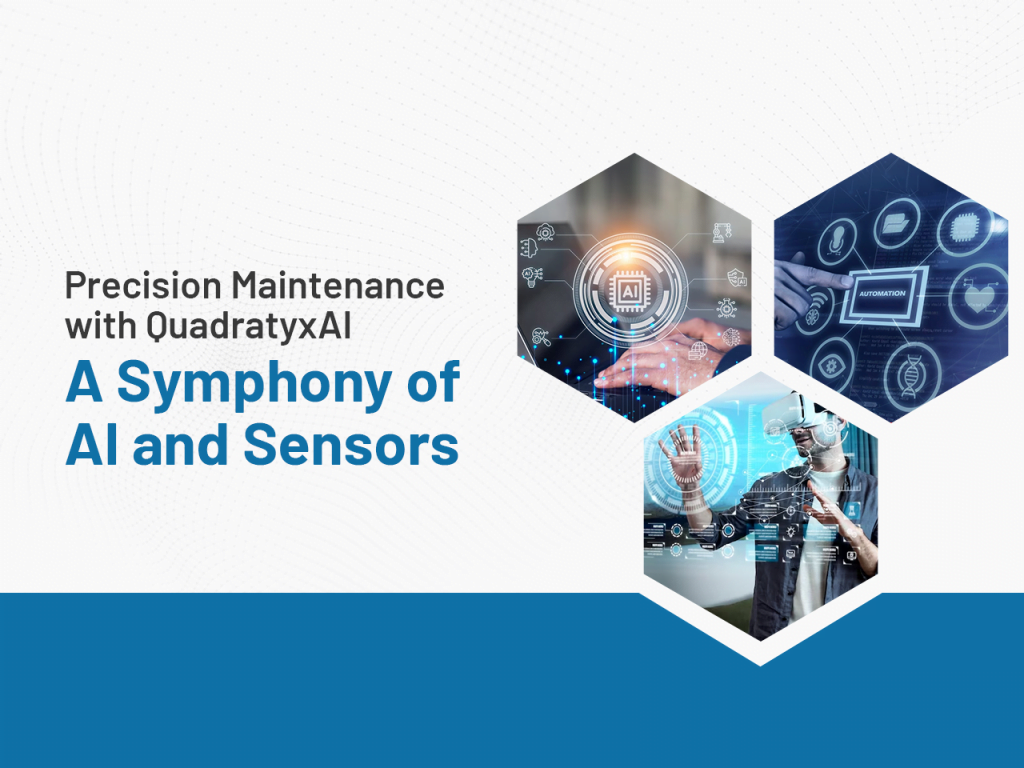Maintenance plays a pivotal role in sustaining operational efficiency across diverse industries. It ensures the continuous functionality of equipment, machinery, and infrastructure, preventing unexpected breakdowns and downtime. In manufacturing, regular maintenance enhances production output and product quality. In aviation, it’s critical for safety and compliance. The healthcare sector relies on maintenance for uninterrupted patient care through well-functioning medical equipment. Information technology and telecommunications sectors rely on maintenance for optimal network and system performance. Essentially, maintenance is the proactive safeguarding of assets, promoting reliability, longevity, and cost-effectiveness in various industrial landscapes.
In modern industrial processes, three key elements stand at the forefront of innovation: Precision Maintenance, Sensors, and Artificial Intelligence (AI). Precision Maintenance represents the meticulous approach to upkeep, aiming for accuracy and efficiency in every facet of equipment care. Sensors, on the other hand, act as vigilant eyes and ears, collecting real-time data crucial for decision-making. Finally, AI serves as the brain, processing vast datasets, predicting potential issues, and optimizing maintenance strategies. Together, these elements form a powerful trio, driving a new era of reliability, efficiency, and cost-effectiveness in maintenance practices.
The Need for Precision Maintenance
Precision in maintenance processes is paramount for ensuring optimal functionality and longevity of equipment. It involves a meticulous approach to upkeep, focusing on accuracy and attention to detail. The significance of precision lies in several key aspects:
- Efficiency: Precise maintenance minimizes the margin for error, reducing the likelihood of breakdowns and unplanned downtime. This, in turn, maximizes operational efficiency and productivity.
- Cost-Effectiveness: By addressing issues with precision, resources are utilized more effectively. Unnecessary replacements and repairs are minimized, resulting in long-term cost savings.
- Quality Output: Precision maintenance contributes to the production of high-quality goods or services. Consistently well-maintained equipment ensures that the output meets or exceeds the desired standards.
- Safety: Precision in maintenance enhances safety by identifying and rectifying potential hazards or malfunctions before they escalate. This is particularly crucial in industries where safety is a top priority.
- Asset Longevity: Precise care extends the lifespan of equipment, reducing the need for premature replacements. This not only saves costs but also contributes to sustainability efforts.
All in all precision in maintenance is the linchpin for achieving operational excellence, cost-effectiveness, and reliability across various industries. It serves as a proactive approach to upkeep, ensuring that equipment operates at its peak performance levels.
Role of Sensors in Maintenance
Sensors play a pivotal role in maintenance by serving as vigilant data collectors and monitors. These devices continuously gather real-time information about equipment conditions, performance, and environmental factors. By measuring variables such as temperature, vibration, and pressure, sensors provide critical insights into the health of machinery. This constant stream of data enables proactive decision-making, allowing for early detection of potential issues before they escalate. The role of sensors is indispensable, fostering a predictive and preventive maintenance approach that enhances overall operational efficiency, minimizes downtime, and contributes to cost-effective asset management in various industries.
The Benefits of Real-Time Data for Maintenance Decision-Making
- Swift Responses: Real-time data enables quick reactions to changing conditions, minimizing downtime and improving operational efficiency.
- Early Issue Detection: Immediate access to accurate data allows for the early identification of potential problems, facilitating preventive measures before equipment failure occurs.
- Cost Reduction: Proactive maintenance based on real-time insights minimizes the need for costly repairs, extending the lifespan of assets and optimizing resource allocation.
- Optimized Schedules: Real-time data aids in fine-tuning maintenance schedules, ensuring tasks are performed precisely when needed, reducing disruptions, and saving resources.
- Transition to Predictive Strategies: Leveraging real-time insights allows maintenance teams to shift from reactive to predictive strategies, enhancing overall system reliability and performance.
The Synergy of AI and Sensors
The collaboration between AI and sensors creates a powerful synergy, yielding optimal results in maintenance processes. Here’s how they work together:
- Data Collection: Sensors gather real-time data on equipment conditions. AI processes this vast dataset, identifying patterns and anomalies that may go unnoticed with traditional monitoring.
- Predictive Analysis: AI algorithms analyze historical and real-time sensor data to predict potential issues. This predictive capability allows for proactive maintenance, addressing problems before they lead to downtime.
- Smart Decision-Making: AI interprets sensor data intelligently, making informed decisions on the urgency and type of maintenance required. This ensures resources are allocated efficiently.
- Continuous Learning: AI continuously refines its understanding of equipment behavior based on sensor feedback. This adaptive learning loop enhances the accuracy of predictions over time.
- Automation: AI-driven automation streamlines maintenance processes. When sensors detect abnormalities, AI can trigger automated responses, reducing the need for manual intervention and accelerating resolution times.
The collaboration between AI and sensors optimizes maintenance by harnessing real-time data for predictive insights and intelligent decision-making, ultimately maximizing operational efficiency and minimizing downtime.
Conclusion
In conclusion, the synergy of Precision Maintenance, Sensors, and QuadratyxAI presents a transformative paradigm for maintenance excellence. Precision Maintenance ensures meticulous care, optimizing efficiency and cost-effectiveness. Sensors act as vigilant data collectors, providing real-time insights crucial for proactive decision-making. The transformative impact lies in the seamless integration of QuadratyxAI, where AI and sensors collaborate harmoniously. QuadratyxAI’s advanced algorithms interpret sensor data intelligently, enabling predictive analysis and precise maintenance interventions. This not only minimizes downtime but also maximizes the longevity of assets. The showcase of QuadratyxAI’s prowess in enhancing precision is evident in its ability to learn and adapt, continuously refining maintenance strategies. As we embrace this amalgamation of precision, sensors, and QuadratyxAI, we embark on a journey toward a future where maintenance is not just a necessity but a strategic driver of operational excellence and sustainable asset management.

